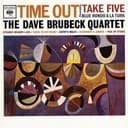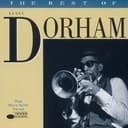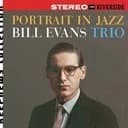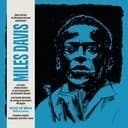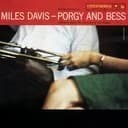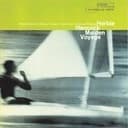History and Development of Bebop Scales
Bebop scales emerged in the 1940s during the bebop jazz revolution, pioneered by innovative musicians like Charlie Parker, Dizzy Gillespie, and Thelonious Monk who transformed jazz improvisation through rapid harmonic movement and complex melodic lines. These jazz visionaries discovered that traditional seven-note scales created rhythmic challenges when played as consecutive eighth notes in 4/4 time, often causing chord tones to fall on weak beats and creating awkward melodic phrasing. The bebop major scale evolved as a practical solution to this rhythmic problem, adding a chromatic passing tone to create an eight-note structure that naturally aligns chord tones with strong beats, allowing improvisers to play flowing eighth-note lines that maintain clear harmonic direction.
The development of the bebop major scale represented a significant theoretical innovation in jazz pedagogy, codifying the chromatic approaches that bebop masters instinctively incorporated into their improvised solos. While bebop musicians didn't necessarily think in terms of "bebop scales" during performance—they learned through listening, transcription, and absorption of the jazz language—the systematic identification and teaching of these scales in later decades provided jazz students with accessible frameworks for understanding and reproducing authentic bebop vocabulary. The bebop major scale, along with other bebop variations, became a cornerstone of jazz education, bridging the gap between traditional scale theory and the chromatic sophistication of modern jazz improvisation.
The Chromatic Passing Tone: E♯ (F) and Voice Leading
The defining characteristic of the A bebop major scale is the chromatic passing tone E♯ (enharmonically equivalent to F natural), positioned strategically between the perfect fifth (E) and major sixth (F♯) of the A major scale. This raised fifth creates a chromatic half-step that transforms the seven-note major scale into an eight-note octatonic structure, fundamentally altering the scale's rhythmic properties while preserving its major tonality. The interval formula changes from the traditional major scale pattern of 2-2-1-2-2-2-1 semitones to 2-2-1-2-1-1-2-1, inserting a crucial chromatic interval that produces the intervals: root (1), major second (2), major third (3), perfect fourth (4), perfect fifth (5), augmented fifth (♯5), major sixth (6), and major seventh (7).
The placement of E♯ (F) between E and F♯ creates exceptional voice-leading possibilities that enhance melodic chromaticism while maintaining the scale's major quality. When improvising ascending lines, the E♯ creates smooth chromatic motion from the chord fifth (E) up to the chord sixth (F♯), adding sophisticated chromatic color characteristic of bebop phrasing. In descending passages, the chromatic movement from F♯ down through F natural to E creates elegant voice leading that connects chord tones seamlessly. This chromatic passing tone functions similarly to approach notes in bebop theory—non-harmonic tones that create forward momentum and connect structural chord tones through stepwise chromatic motion, generating the characteristic bebop sound that balances diatonic harmony with chromatic melodic sophistication.
Application in Jazz Improvisation Over Major Chords
The A bebop major scale serves as the primary improvisational tool over Amaj7 (A major seventh) and A6 (A major sixth) chords in jazz contexts, particularly in progressions where A functions as the I chord establishing major tonality. Jazz pianists employ this scale to create flowing eighth-note bebop lines that outline the chord structure (A-C♯-E-G♯ for Amaj7, A-C♯-E-F♯ for A6) while incorporating characteristic chromatic passing tones. The eight-note structure ensures that when playing consecutive eighth notes starting from A, the chord tones (root, third, fifth, and seventh or sixth) consistently fall on strong beats (beats 1, 2, 3, 4) while passing tones and the chromatic E♯ fall on weak beats, creating natural rhythmic emphasis that reinforces harmonic clarity.
In jazz standards and bebop compositions, the A bebop major scale excels in major I chord contexts and ii-V-I progressions resolving to A major. When soloing over progressions like Bm7-E7-Amaj7, jazz improvisers often switch to the A bebop major scale on the Amaj7 resolution, creating satisfying melodic cadences that emphasize major tonality with chromatic sophistication. The scale works particularly well in medium and up-tempo swing feels where eighth-note lines predominate, providing a reliable framework for generating authentic bebop vocabulary including enclosures, chromatic approaches, and digital patterns that characterize the bebop style. Advanced players often alternate between the A bebop major scale and related scales like A major or A Lydian to create harmonic variety and color within extended major chord passages.
Chord Progressions and Harmonic Contexts
The A bebop major scale functions optimally in jazz progressions featuring Amaj7 or A6 chords as tonic resolutions, particularly the ubiquitous ii-V-I progression in A major: Bm7-E7-Amaj7. In this fundamental jazz progression, pianists typically apply B Dorian over the ii chord (Bm7), E bebop dominant or E Mixolydian over the V chord (E7), and A bebop major over the I chord (Amaj7), creating seamless scalar voice leading through the progression. This approach appears throughout jazz repertoire in standards like "Take the A Train," "All the Things You Are" (in A♭ major), and countless other compositions, where the bebop major scale provides the perfect tool for articulating major chord resolutions with appropriate jazz vocabulary.
Beyond ii-V-I progressions, the A bebop major scale works effectively in major turnarounds, vamps, and modal jazz contexts where A major harmony predominates. In rhythm changes and contrafacts built on "I Got Rhythm" chord progressions transposed to A major, the bebop major scale handles the I chord sections while allowing improvisers to navigate the bridge and harmonic variations. The scale also functions in bossa nova and Latin jazz contexts where major seventh chords receive extended harmonic treatment, providing melodic material that maintains rhythmic interest across multiple measures. Jazz musicians often practice applying the bebop major scale through all twelve keys, transposing it to match tonic major chords throughout the circle of fifths, developing the technical facility and theoretical understanding necessary for fluid bebop improvisation across all harmonic contexts.
Practice Techniques and Related Scales
Effective piano practice of the A bebop major scale begins with establishing solid technical foundations through consistent fingering patterns and slow, deliberate repetition. For the right hand ascending from A, use the fingering: 1(A)-2(B)-3(C♯)-1(D)-2(E)-3(F)-4(F♯)-1(G♯)-2(A), carefully positioning the thumb under after the third finger on C♯ and after the fourth finger on F♯. Left hand ascending employs: 2(A)-1(B)-3(C♯)-2(D)-1(E)-2(F)-3(F♯)-1(G♯)-3(A), ensuring smooth thumb crossings and even articulation. Practice hands separately initially, focusing on accurate execution of the chromatic E to F to F♯ passage, then gradually integrate hands together in parallel and contrary motion to develop bilateral coordination.
Rhythmic practice forms the cornerstone of bebop scale mastery, particularly exercises that emphasize chord tones on strong beats. Set a metronome to 60-80 BPM and practice the scale in strict eighth notes, deliberately accenting chord tones (A, C♯, E, G♯ on beats 1, 2, 3, 4) while playing passing tones (B, D, F♯) and the chromatic F natural lighter on the upbeats. This downbeat emphasis drill develops the rhythmic awareness essential for bebop improvisation, training both ear and hands to feel how chord tones align naturally within the eight-note structure. Progress to practicing in different rhythmic groupings (triplets, sixteenth notes, 3+3+2 patterns), applying the scale to backing tracks and play-along recordings, and transcribing bebop solos that demonstrate authentic use of the bebop major scale in musical contexts.
Understanding the A bebop major scale's relationship to other scales deepens theoretical knowledge and expands improvisational vocabulary. The scale shares its root with A bebop dominant, which adds a chromatic passing tone to A Mixolydian rather than A major, creating parallel bebop scales appropriate for different chord qualities. The A bebop major scale also relates closely to A major, A Lydian, and other modes built on major tonality, differing only in the addition of the chromatic passing tone. Advanced jazz students explore connections between bebop scales and harmonic minor variants, melodic minor modes, and symmetric diminished scales, building a comprehensive scalar vocabulary that supports sophisticated harmonic navigation across all jazz styles from traditional bebop through contemporary jazz fusion.
